How to Analyze NFT Industry Trends?
Unlike traditional industries where a trend tends to last for a longer period of time, in the range of years, the NFT is constantly changing. By analyzing the recent trends, users will be able to have a better understanding of the industry cycles, consumer behaviors and from there, predict future trends. There are a few areas of interest that users can dive in to understand such trends.
1. Macro Market Analysis
a. Barometer
First and foremost, the most important part would be to have a macro overview of the recent market performance. This can be achieved by the barometer dashboard which reflects both the current market sentiment and traders' performance.
The Market Sentiment Index is a number ranging from 1 to 100, which indicates the amount of interest the market has for NFTs.
- 1 < Index < 40: Cold | Low interest
- 40 < Index < 60: Regular | Neutral interest
- 60 < Index <100: Hot | High interest
Another feature within the Barometer is that of the 24 hour traders volume. This is a good indicator that users can use to have a gauge of the level of trading activity occurring. A higher level of trading activity usually means that traders identify that there are opportunities within the market that they can leverage on to gain profit. This could be because of recent hot launches or renewed interest in certain collections because of new update. Example of such events are Azuki's Golden Skateboard NFT Auction and Otherdeed for Otherside, which is a land project by BAYC.

b. Blue Chip Index
Blue chip collections are collections that have been in the market for a fairly long duration, and have displayed good performance. As such, these collections are look towards as reliable projects to invest in. This is evident by the market cap they hold in the entire NFT market, with the top 3 blue chip collections (CryptoPunks, Bored Ape Yacht Club and Mutant Ape Yacht Club, as of writing) holding 20% of the entire market cap.
Blue chip collections are widely tracked by the market given its reliability. As such, the blue chip index tracks the performance of such blue chip collections in terms of their market cap. Should the blue chip index be low, it indicates that the market is in a fairly risk-off manner as even the top reliable collections are declining in performance.

c. Market Cap & Volume
A very clear reflection of the market's performance would be the market cap and volume. Market cap is essentially a measure of the value of all NFTs within the market. Given that the NFT value is highly dependent on market sentiments, an increasing market cap trend indicates bullish sentiments within the market and vice versa, a declining market cap is reflective of bearish sentiments.
Volume is also a good indicator of whether there is active market participation. A lower trading volume could potentially reflect that traders/investors are sitting out of the market as they foresee a drop in value.
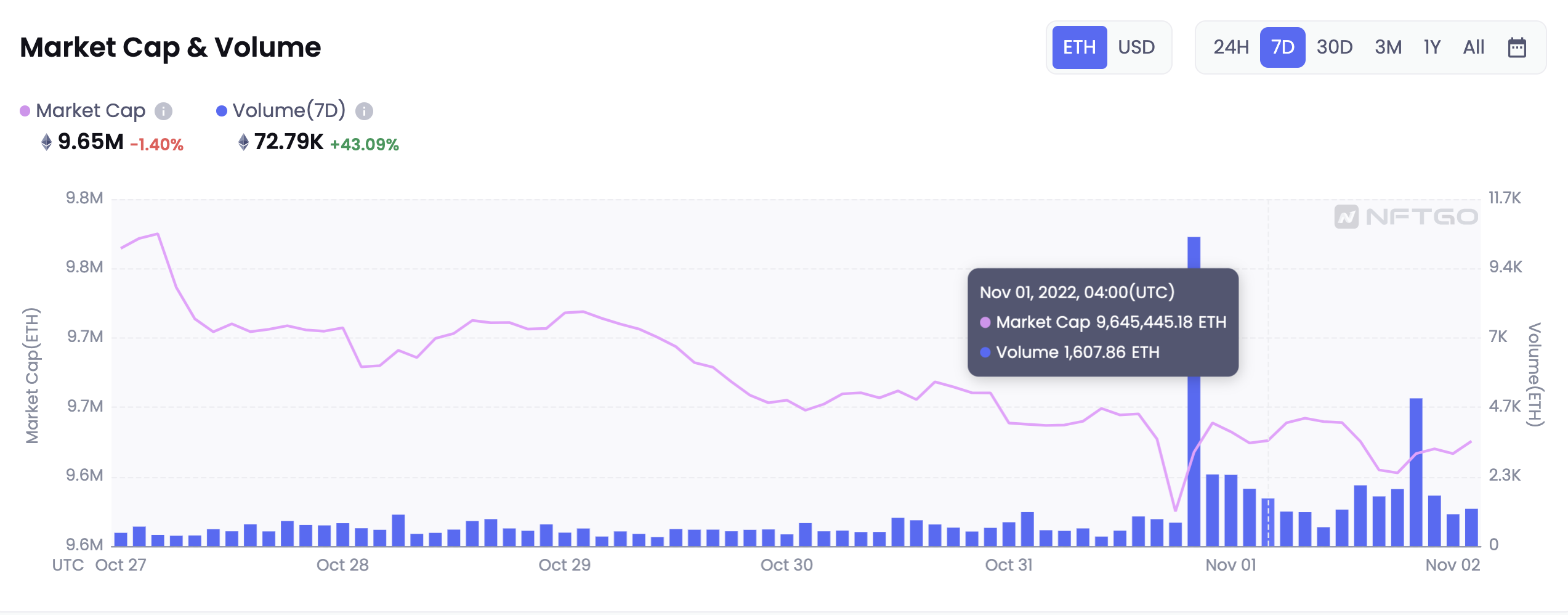
2. Collection Analysis
There are 2 particular metrics that users can observe to infer what the industry trends are, particular the category of collection the market is interested in.
a. Category Market Cap
The NFT market is broadly categorised into 14 types: Game, Collectibles, PFP, Art, Metaverse, DeFi, IP, Social, Music, Utility, Land, Domain Name, Sports, Photography. Categories. With this feature, users are able to get a grasp of where bulk of the market value is in.
As shown in the chart below, PFP is the category with the highest market cap. Users can thus choose to research more and keep a lookout for PFP collections.
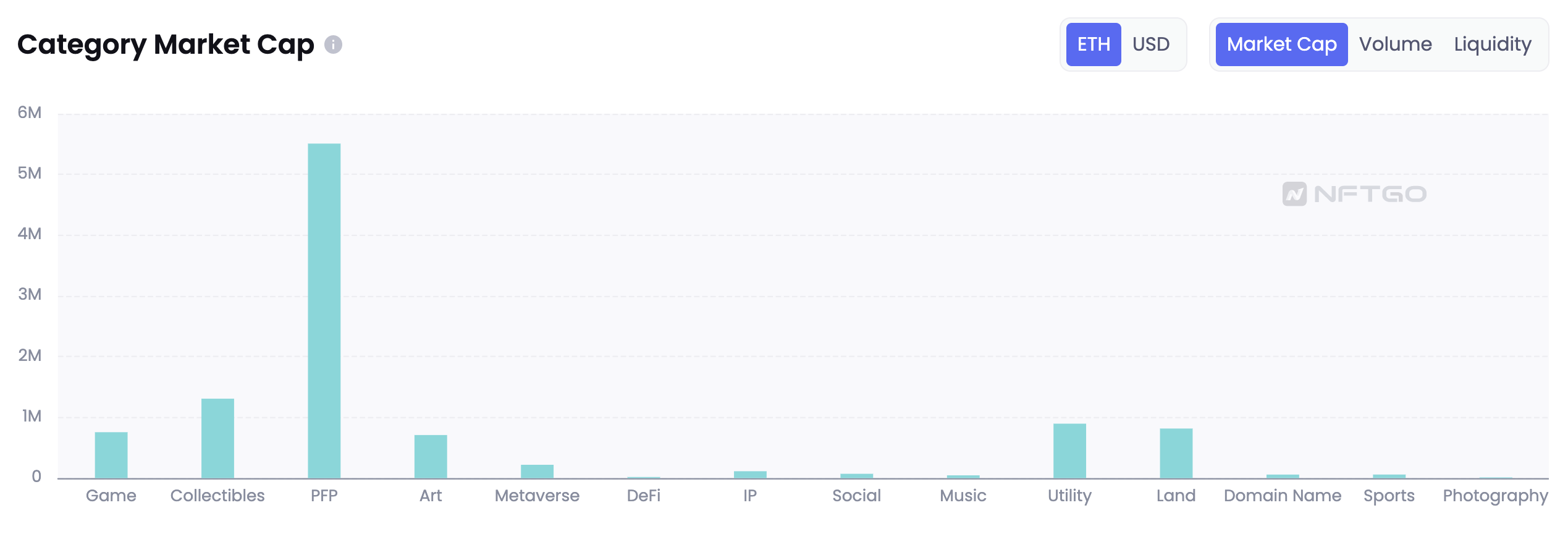
b. Category Volume
This feature highlights the trading volume within each category, based on the desired time period. This is a very good indicator in helping users identify the industry trend. As evident over the past year, trends shift within the NFT marketplace and certain categories of NFTs become the talk of the town during certain periods. For example, the NFT Top Shot collection led to a spike in trading volume within the sports NFT market, followed by Axie Infinity which drove a GameFi narrative, significantly increasing the transaction volume for Game NFTs.
With the category volume, not only do users get to understand the overall market sentiment revolving around the NFT industry, they get to dive deeper to understand which particular category is gaining the market attention. From there, they can then look more into such hyped categories, and potentially find investing opportunities.
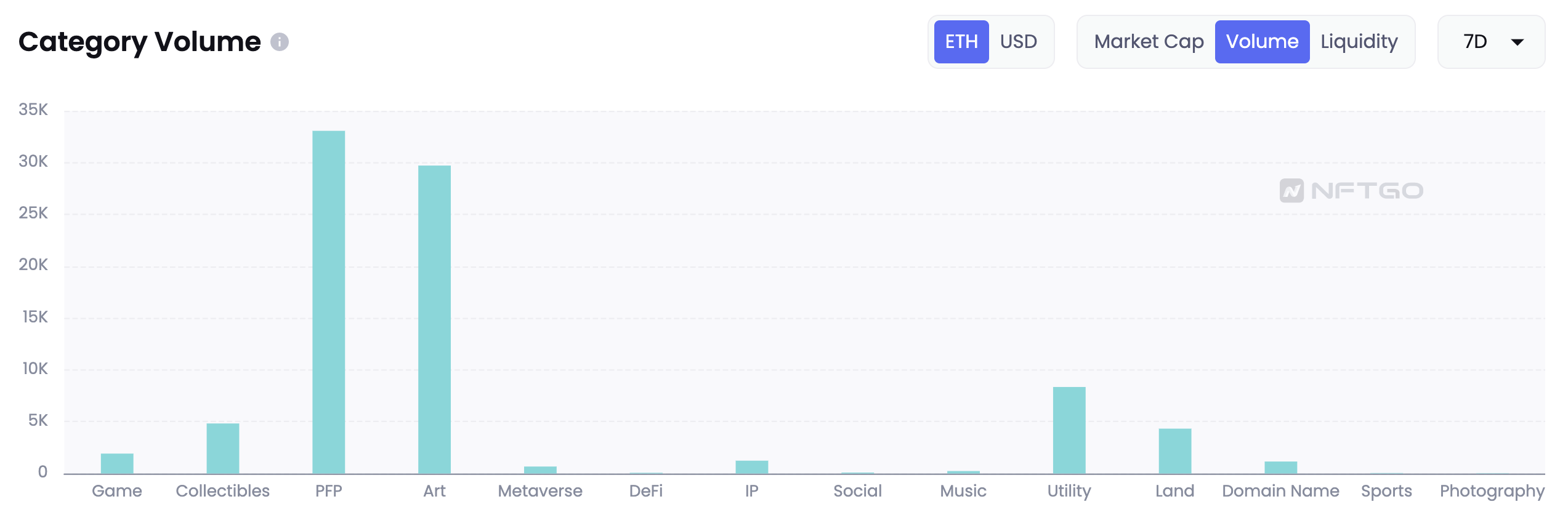
c. Top Collections
After looking at the broader categories of the NFT marketplace. Users can then look into specific collections. Users will be able to click on the 'All' tab as shown in the red box below, and choose the particular category of NFTs they wish to analyze.
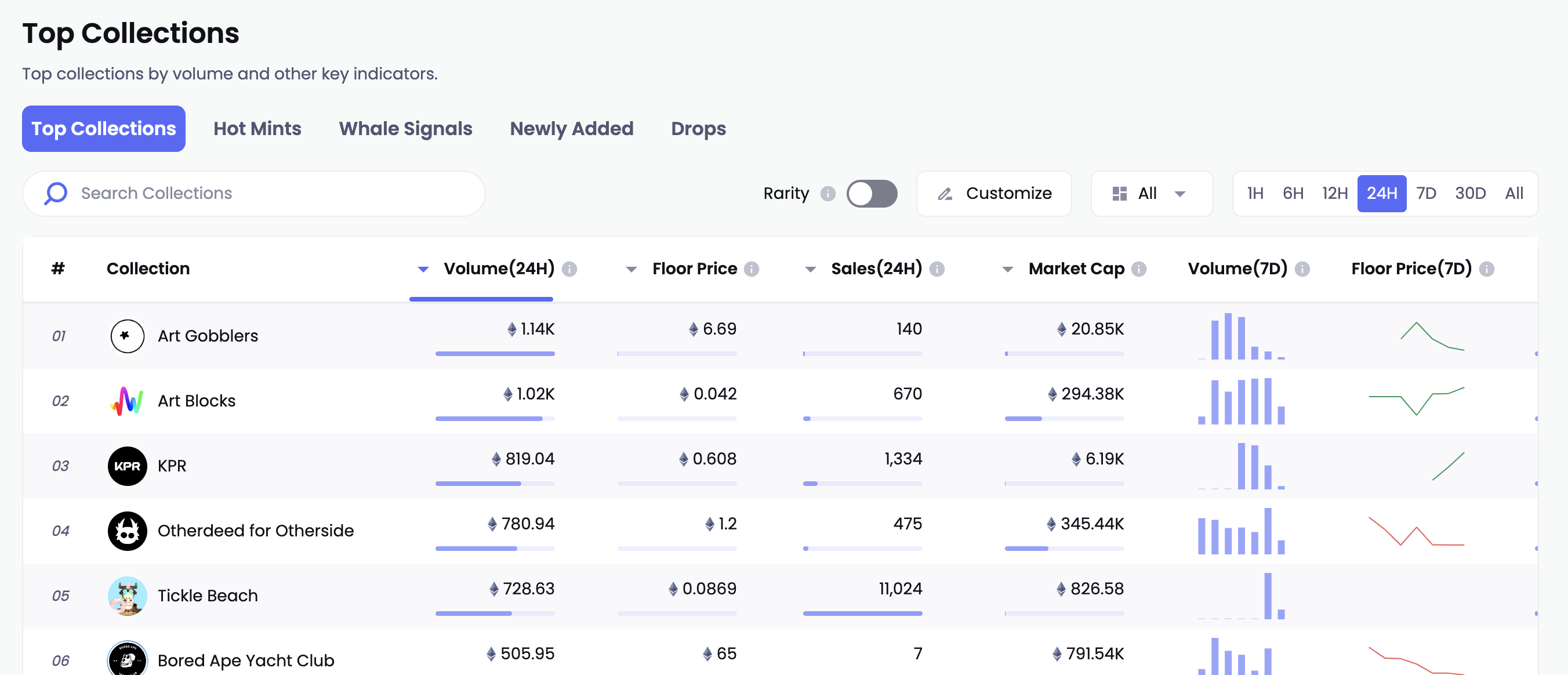
3. Consumer Behavior Analysis
a. Holders & Traders
Consumer behavior drives industry trends. Hence, it is also interesting to analyze consumer behavior over time, as the historical data could potentially help users identify some short term trends.
The holders & traders chart gives an overview of the number of holders and traders in the market over a stipulated timeframe. An increase in the number of traders could indicate that they are new opportunities within the market, which results in traders entering the market to leverage on such opportunities. This could be coupled with a rise in activities in the market.
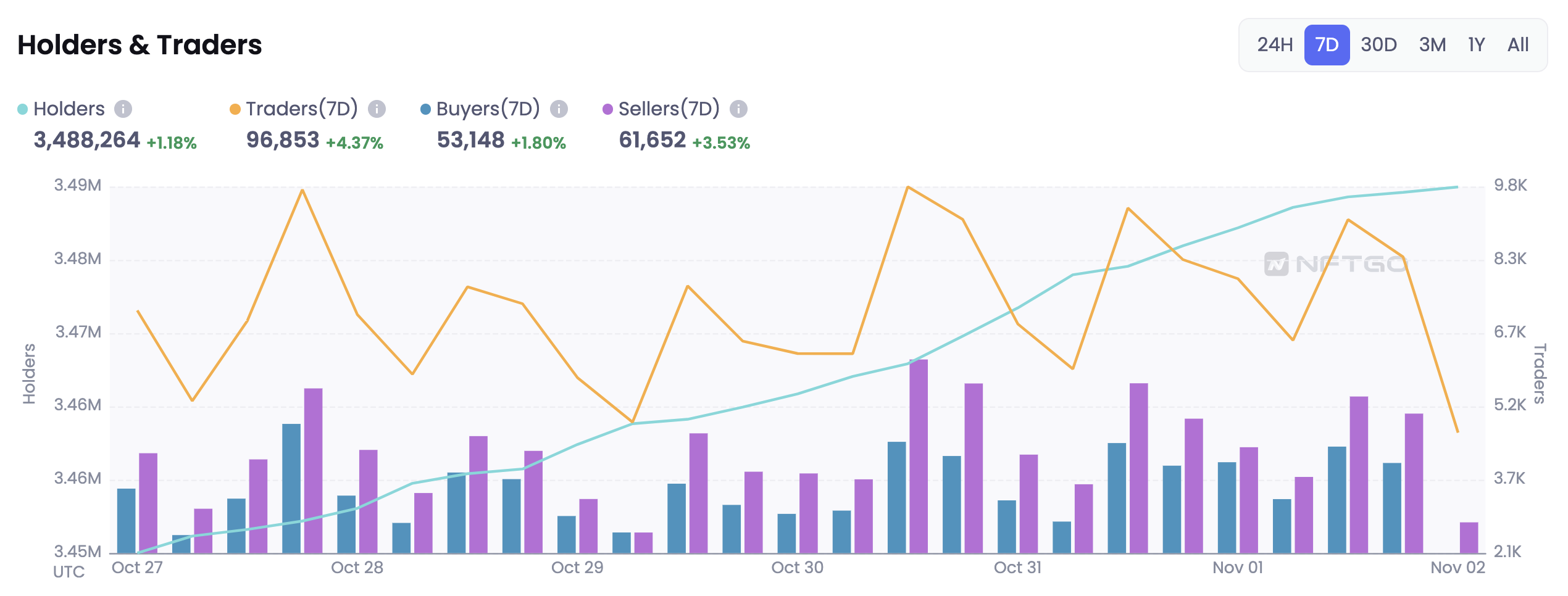
Analyzing consumer behavior is also an interesting topic. Our Holders & Traders chart gives you a general idea of the number of holders and traders in the market over a period. If the trends suddenly increase or drop, it probably indicates some big events have happened and influenced consumer behavior. Additionally, NFTGo collected all addresses in one place and you can pick the metrics to further deep dive.
Updated 7 months ago
